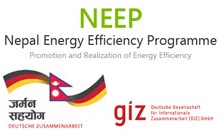With the steady development of the Diesel Engine, the specific fuel consumption has come down from the value of 220 g/kWh in the 1970 to a value of around 160 g/kWh in present times. With the arrival of modern high efficiency turbochargers, it is possible to use an exhaust gas driven turbune generator to further increase the engine rated output. The net result would be lower fuel consumption per kWh and further increase in overall thermal efficiency. The diesel engine is able to burn the poorest quality fuel oils, unlike gas turbine, which is able to do so with only costly fuel treatment equipment.
Diesel Generator (DG) Set Selection and Installation Factors
If a DG set is required for 100% standby, then the entire connected load in HP/kVA shold be added. After finding out the diversity factor (Demand/Connected Load), the correct capacity of a DG set can be found out.
Example: The connected Load = 650 kW, Diversity Factor = 0.54, Maximum Demand = 650 * 0.54 = 350 kW, % Loading = 70, Set Rating = 350/0.7 = 500 kW. At 0.8 Power Factor, the DG Set rating = 625 kVA.
For and existing installation, record the current, voltage and power factor reading at the main bus-bar of the system at every half-an-hour interval for a period of 2 - 3 days and during this period the factory should be having its normal operations. The non-essential loads should be switched off to find the realistic current taken for running essential equipment. This will give a fair idea about the current taken from which the rating of the set can be calculated.
kVA = √3 V I, kVA Rating = kVA/Load factor, where Load Factor is the ratio of average kVA to maximum kVA.
For a new installation, an approximate method of estimating the capacity of a DG set is to add full load currents of all the proposed loads to be run in DG set. Then, applying a diversity factor depending on the industry, process involved and guidelines obtained from other similar units, correct capacity can be arrived at.
Unbalanced Load Effects
It is always recommended to have the load as much balanced as possible, since unbalanced loads can cause heating of the alternator, which may result in unbalanced output voltages. The maximum unbalanced load between phases should not exceed 10% of the capacity of the DG Sets.
Load Pattern
In many cases, the load will not be constant throughout the day. If there is substantial variation in load, then consideration should be given for parallel operation of DG Sets. In such a situation, additional DG Sets are to be switched on when load increases. The typical case may be an establishment demanding substantially different powers in first, second and third shifts. By parallel operation, DG Sets can be run at Optimum Operating Points or near about, for Optimum fuel consumption and additionally, flexibility is built into the system. This scheme can also be applied where loads can be segregated as critical and non-critical loads to provide standby power to critical load in the captive power system.
Energy Performance Assessment of DG Sets
Routine energy efficiency assessment of DG sets involves following typical steps:
Ensure reliability of all instruments used for trial.
Collect technical literature, characteristics, and specifications of the plant.
Conduct a 2 hour trial on the DG set, ensuring a steady load, wherein the following measurements are logged at 15 minutes intervals.
- Fuel consumption (by dip level or by flow meter)
- Amps, volts, PF, kW, kWh Intake air temperature, Relative Humidity (RH)
- Intake cooling water temperature
- Cylinder-wise exhaust temperature (as an indication of engine loading)
- Turbocharger RPM (as an indication of loading on engine)
- Charge air pressure (as an indication of engine loading)
- Cooling water temperature before and after charge air cooler (as an indication of cooler performance)
- Stack gas temperature before and after turbocharger (as an indication of turbocharger performance)
The fuel oil/diesel analysis is referred to from an oil company data. Analysis - The trial data is to be analysed with respect to:
- Average alternator loading.
- Average engine loading.
- Percentage loading on alternator.
- Percentage loading on engine.
- Specific power generation kWh/liter.
- Comments on Turbocharger performance based on RPM and gas temperature difference.
- Comments on charge air cooler performance.
- Comments on load distribution among various cylinders (based on exhaust temperature, the temperature to be ± 5% of mean and high/low values indicate disturbed condition).
- Comments on housekeeping issues like drip leakages, insulation, vibrations, etc
The following table format can be used for monitoring the performance of DG Set:



